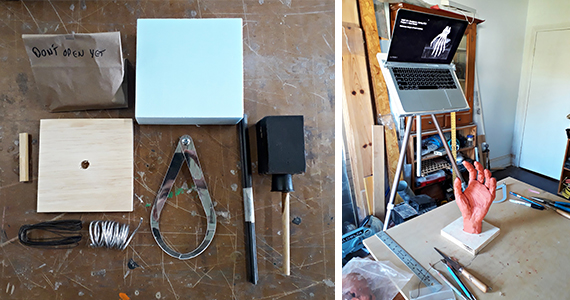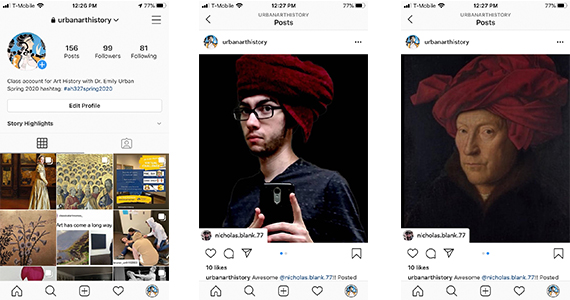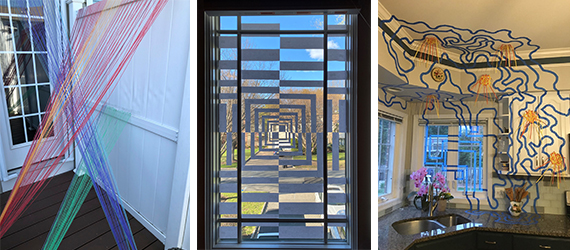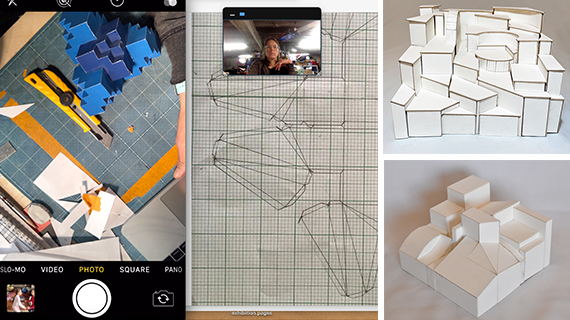Remote Teaching with Art & Art History
 Assistant Professor Lewis Colburn creates remote teaching kits for his students in Sculpture I.
Assistant Professor Lewis Colburn creates remote teaching kits for his students in Sculpture I.
April 23, 2020
The Department of Art & Art History, which includes the Art History major and a wide range of studio art and design courses, understandably faced many challenges in adapting their curriculum to remote teaching. Access to materials and studio instruction are cornerstones of a Westphal arts education. Art & Art History faculty, however, have a resourceful streak, and have already come up with novel solutions to keep students engaged.
Assistant Professor Lewis Colburn is taking on the challenge of teaching Sculpture I this turn—a class that typically takes advantage of our woodshop, metal shop, CNC routers, and studios. In order to give students familiarity with materials usually used in the course, Lewis gathered a kit of materials to ship to each Sculpture I student. His kits included a block of wax for carving, samples of steel and foam, wood and wire for building a hand armature (the underlying framework for a sculpture on which clay or other materials are applied), a pair of sculptor’s calipers made using scrap acrylic fabricated with Westphal’s CNC routers, and a mystery object in a paper bag that students will use as inspiration for one of the class projects.
“Our first project is modeling the hand in oil clay, so I have been modeling alongside my students and streaming the process over Zoom, with occasional moral support from my dog, Roxy,” said Lewis.
Barbara Smolen, who teaches Figure Drawing for Fashion, found a creative solution to a course that requires a live model—she’s doing it herself. Barbara drew princess seams, a waistline, high hip line, bust line, and arm and leg openings on her outfit in chalk and posed in contrapposto fashion postures for her cohort. While Barbara doesn’t plan to leave teaching behind for a modeling career, it gave students a real model to draw and brought humor and a warm personal touch into the classroom.

Adjunct faculty Emily Urban creates a private Instagram account for her Italian Renaissance Art class (left); Student replicates Jan van Eyck, Portrait of a Man (center, right).
In Emily Urban’s Italian Renaissance Art class, students can earn participation credit by engaging with the course Instagram account, which is populated with relevant art history and museum updates and references, as well as lighthearted art history content and memes. Art History students have gone above and beyond, submitting original artwork inspired by course content, or recreating famous works of art with household objects to hilarious results.

Sydney Gallagher (left); Jess Guidetti (center); Maddie Lane (right)
Students from programs across the College taking Multimedia: Space expressed excitement to their instructor, Karen Stone, when they were called upon to create large-scale installations in their home space. Students were asked to construct a nonobjective mural using various types of lines and line weights to create the illusion of depth in pictorial space. Designs were composed to address three of the following components: unity, scale, orientation, proportion, balance, negative and positive space, focal points, repetition, speed, energy and tension. “They are working through their circumstances and doing a great job,” Karen said of her students. “I love teaching online and my students are thriving.”
In History of Modern Design, taught by Assistant Professor Joseph H. Larnerd, students are working toward a shared final project, tentatively titled "The Museum of Where We Are." Each student will choose one example of modern design in their current residence as their focus object for the quarter. With this object, they will perform the hands-on exercises that would otherwise take place in the Drexel Collection, the University’s extensive collection of art, design and more. "The Museum of Where We Are." exhibition will consist of an introductory text, images of the objects, and each student’s short, polished ‘wall label’ for their artifact. Objects to be featured in the exhibition include a Barcelona chair and ottoman, a Swiss army knife, an IKEA wardrobe, a Samsung POWERbot robot vacuum cleaner, a Chinese tunic suit, a bobblehead of Michelangelo's David, and a Maytag dishwasher.

Studio Art Program Director Sarah Steinwachs shares overhead view of Three-Dimensional Design class (left); Jazmine Brown (top right); Flora Medina (bottom right)
Studio Art Program Director Sarah Steinwachs adapted her Three-Dimensional Design class to remote delivery by focusing on the essentials; she knew she had to have ‘live’ demonstrations of building the assignments with students in a synchronous format. So Sarah rigged her iPhone to record her work and used QuickTime to mirror the screen live onto her Zoom teaching sessions. “I feel a little like the Swedish Chef from the Muppets, but the set-up has worked out tremendously!” Sarah remarked.